NAVYPEDIA
 Support the project with paypal
Support the project with paypal
Ships
Name |
No |
Yard No | Builder |
Laid down |
Launched |
Comp |
Fate |
|---|---|---|---|---|---|---|---|
| Narvik | M651 | DCN, Lorient | 1990 | 22.3.1991 | --- | cancelled 1992 |
Technical data
| Displacement standard, t | 890 |
|---|---|
| Displacement full, t | 905 |
| Length, m | 46.6 pp 52.0 oa |
| Breadth, m | 15.0 |
| Draught, m | 3.60 |
| No of shafts | 2 |
| Machinery | 2 SACM UD 33V12 M4 diesels / 2 electric maneuvering propellers |
| Power, h. p. | 2720 / 340 |
| Max speed, kts | 15 |
| Fuel, t | diesel oil |
| Endurance, nm(kts) | 5000(10) |
| Armament | 1 x 1 - 20/90 MIT-20F2, 2 x 1 - 12.7/90, 2 PAP-104 Mk 5 UAV, mechanical minesweeping gear, AP-4 acoustic minesweeping gear |
| Electronic equipment | DRBN-32 radar, DUBM-42, DUBM-60A sonars |
| Complement | 40 |
Standard scale images

Narvik
Project history
Designed by DCN, the BAMO (Bâtiment Anti-Mines Ocèanique) was intended to provide a conventional minesweeping capability in deeper waters, a mission previously performed by the former ocean minesweepers of the US Agile class. A catamaran hull constructed of GRP was selected in order to create the deck space needed for mechanical, magnetic and acoustic (AP-4) sweeps. It was claimed that a catamaran would provide improved seakeeping, stability and manoeuvrability in deepwater minesweeping operations.
Narvik was funded under the 1990-93 programme, but all other protected units were cancelled in 1992 due to budgetary problems.
Other ships of the class, M652 Autun, M653 Bir-Hakeim, M654 Colmar, M655 Garigliano and M656 Berlaimont, were never laid down.
 HOME
HOME FIGHTING SHIPS OF THE WORLD
FIGHTING SHIPS OF THE WORLD FRANCE
FRANCE MINE WARFARE SHIPS
MINE WARFARE SHIPS NARVIK ocean mine countermeasures ships
NARVIK ocean mine countermeasures ships
